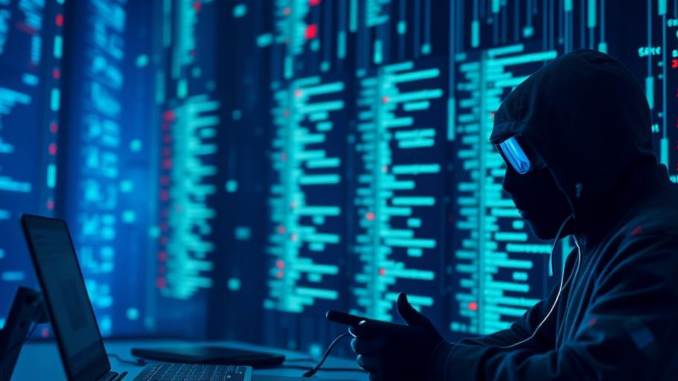
Summary
Cybersecurity vulnerabilities in solar power inverters, cloud platforms, and monitoring systems expose the energy grid to manipulation, disruption, and data breaches. Hackers could exploit these weaknesses to cause blackouts, steal sensitive information, and hijack smart home devices. Addressing these risks requires robust security measures from manufacturers, regulators, and consumers.
Join the thousands of technical experts who trust TrueNAS for data security and peace of mind.
** Main Story**
Solar Power Infrastructure: A Hacker’s New Playground?
The shift towards solar energy? It’s definitely a game-changer, bringing a wave of benefits. But let’s be real, it also throws open the door to some serious security risks. Researchers have actually found some pretty alarming security flaws in solar power systems, and I’m talking inverters, cloud platforms, the whole shebang. This makes them juicy targets for hackers, and the potential consequences? Not good.
Grid Stability and Data: Sitting Ducks?
Solar inverters, those unsung heroes converting sunlight into usable power, are now squarely in the crosshairs. Forescout’s Vedere Labs, for instance, just dropped a report uncovering a whopping 46 new vulnerabilities in inverters from some major players: Sungrow, Growatt, and SMA. I mean, come on! From unauthorized remote access to weak authentication and remote code execution, it’s a hacker’s dream. Imagine someone flipping inverters on and off like a light switch – that’s a recipe for a grid meltdown, a cascade of failures leaving everyone in the dark. That said its not just the grid stability that is at risk, its also peoples data.
Beyond the risk of blackouts, these vulnerabilities put sensitive data on the line. Hackers could potentially access user data, energy consumption patterns, even financial details. Insecure object references and cross-site scripting (XSS) vulnerabilities could expose personal info – email addresses, locations, energy usage – basically, a privacy nightmare, and a GDPR violation waiting to happen. What’s more, some vulnerabilities even give attackers the keys to other smart home devices linked to the solar system. Electric vehicle chargers, smart plugs? They could all become pawns in a cyberattack. You have to wonder, what can be done to mitigate this risk?
Securing Our Solar Future: It’s a Must
The vulnerabilities that have been identified highlight something we already knew; the need for serious, improved cybersecurity in the solar energy sector. And honestly it can’t come soon enough. Solar power is becoming increasingly essential, so protecting it from cyber threats is paramount. Manufacturers have to prioritize security from the get-go, baking robust security measures into their products from day one. Regular software updates and security patches? Non-negotiable. I’ve always been a proponent of “security by design”, and its never been more relevant.
Grid operators and utility companies, they need to step up, too. Implement strict security protocols, conduct regular risk assessments – it’s all about identifying and plugging those holes before someone else does. It’s the digital equivalent of fortifying your castle walls, wouldn’t you say? So what can you do about it?
Your Role in Solar Security
Even consumers have a part to play, and it starts with choosing reputable manufacturers who take cybersecurity seriously. And folks, please, use strong, unique passwords! It’s a simple step that can make a huge difference. Keep your software updated, and educate yourself about potential threats and best practices. Trust me, a little awareness goes a long way. Its also important to not be afraid to speak up, call your manufacturer, ask questions. The squeaky wheel gets the grease after all.
The transition to sustainable energy is a team effort. Manufacturers, regulators, grid operators, consumers – we all need to work together. By doing that, we can build a solar energy infrastructure that’s not just efficient but also secure. A system that powers our world safely and reliably. And honestly, isn’t that what we all want?


The potential for attackers to pivot from compromised solar infrastructure to other smart home devices raises significant concerns about the interconnectedness of IoT ecosystems. What security standards or certifications could help ensure a more secure and isolated smart home environment?
That’s a great question! Exploring existing security standards like IEC 62443 and incorporating robust certification programs could definitely bolster the security of interconnected smart home environments. Perhaps a layered security approach, combining hardware and software solutions, would offer the best protection against potential pivots. What are your thoughts?
Editor: StorageTech.News
Thank you to our Sponsor Esdebe
Hackers turning off inverters like light switches? That’s the kind of technological terror I expect in a Bond film, not my smart home. Maybe we need inverters with self-destruct buttons… for the hackers, of course.
Haha, the Bond villain comparison is spot on! While self-destruct buttons for hackers might be a bit extreme (and fun to imagine), focusing on robust intrusion detection systems could provide an early warning, allowing us to isolate and neutralize threats before they cause widespread disruption. What are your thoughts?
Editor: StorageTech.News
Thank you to our Sponsor Esdebe